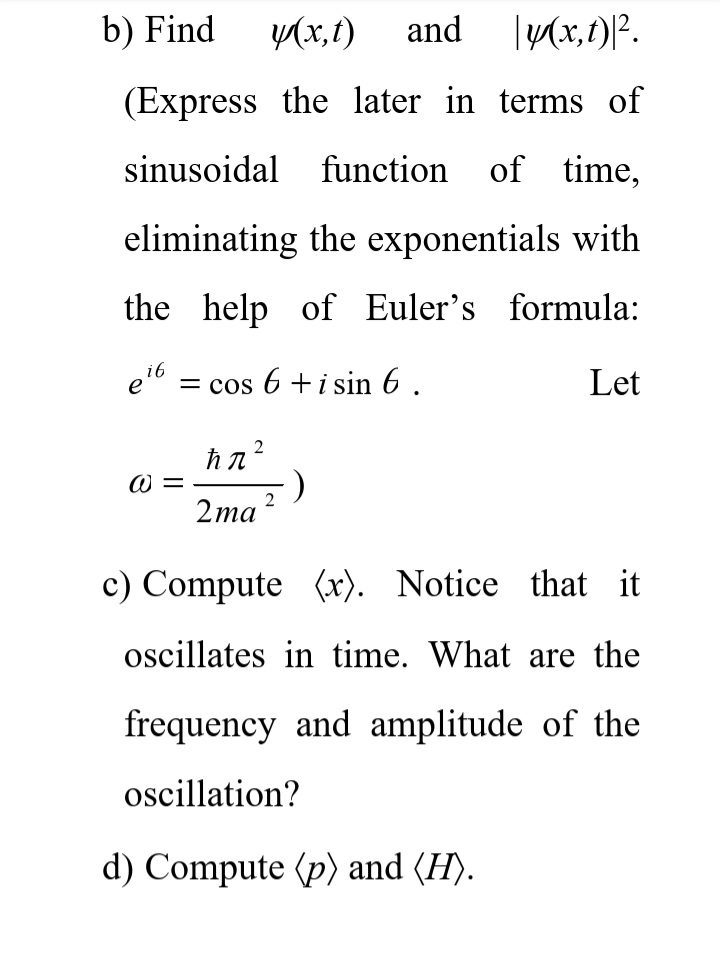b) Find y(x,t) and (Express the later in terms of sinusoidal function of time, eliminating the exponentials with the help of Euler's formula: e" = cos 6 +i sin 6 . Let 2та 2 c) Compute (x). Notice that it oscillates in time. What are the frequency and amplitude of the oscillation? d) Compute (p) and (H).
b) Find y(x,t) and (Express the later in terms of sinusoidal function of time, eliminating the exponentials with the help of Euler's formula: e" = cos 6 +i sin 6 . Let 2та 2 c) Compute (x). Notice that it oscillates in time. What are the frequency and amplitude of the oscillation? d) Compute (p) and (H).
Related questions
Question
![A particle in the infinite square well
has a its initial wave function an even
mixture of the first two stationary
states:
Y (x,0) = A y,(x)+ y ¿(x)]
a) Normalize y(x,0).
b) Find
y(x,t)
and
(Express the later in terms of
sinusoidal function of time,
eliminating the exponentials with
the help of Euler's formula:
e" = cos 6 +i sin 6 .
Let
= M
2ma?](/v2/_next/image?url=https%3A%2F%2Fcontent.bartleby.com%2Fqna-images%2Fquestion%2F0d23c93b-870e-4ad1-8eae-60e3d2381ea8%2F99e01cb9-5358-4287-a56b-90277285413a%2Fhhf010l_processed.jpeg&w=3840&q=75)
Transcribed Image Text:A particle in the infinite square well
has a its initial wave function an even
mixture of the first two stationary
states:
Y (x,0) = A y,(x)+ y ¿(x)]
a) Normalize y(x,0).
b) Find
y(x,t)
and
(Express the later in terms of
sinusoidal function of time,
eliminating the exponentials with
the help of Euler's formula:
e" = cos 6 +i sin 6 .
Let
= M
2ma?

Transcribed Image Text:b) Find
y(x,t)
and
(Express the later in terms of
sinusoidal
function
of time,
eliminating the exponentials with
the help of Euler's formula:
e6
= cos 6 +i sin 6 ,
Let
W =
2та?
c) Compute (x). Notice that it
oscillates in time. What are the
frequency and amplitude of the
oscillation?
d) Compute (p) and (H).
Expert Solution
This question has been solved!
Explore an expertly crafted, step-by-step solution for a thorough understanding of key concepts.
Step by step
Solved in 4 steps with 3 images
